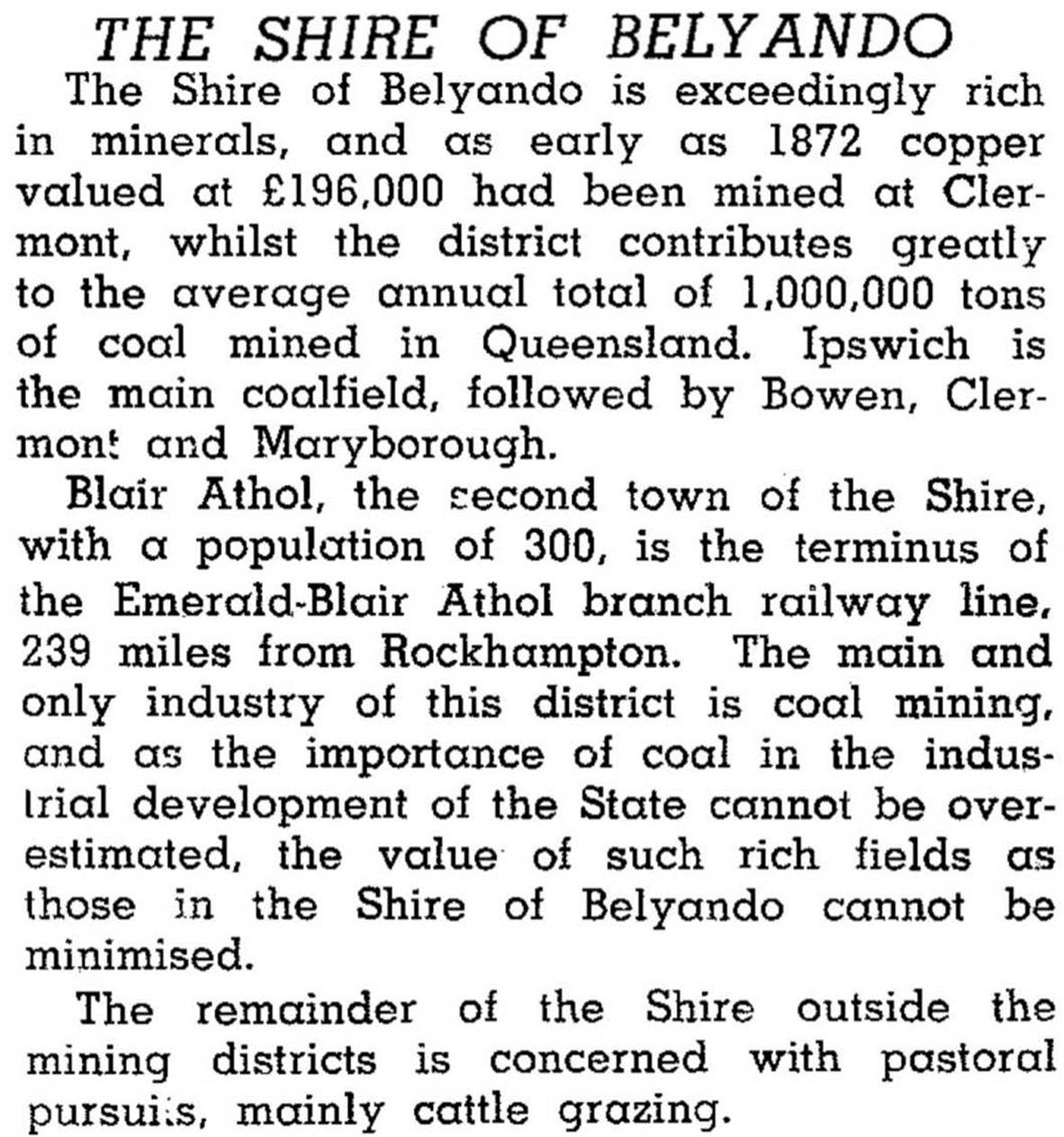Belyando Shire, an area of 30,281 sq km, and generally 400 km north-west of Rockhampton, was amalgamated with Broadsound and Nebo Shire Councils in 2008 to form Isaac Regional Council. Its western sector included the Drummond Range, scrubby woodlands and some undulating parts with grasslands suitable for grazing. The more productive eastern sector has better grazing land, merging with the Peak Downs district, and the former mining towns of Clermont and Copperfield (defunct) and the Blair Athol and Moranbah/Goonyella coal fields.
The shire was named after the Belyando River which rises to the former Shire's south at Alpha and enters the Burdekin system at Lake Dalrymple, west of Mackay. The river was named by the New South Wales Surveyor-General, Thomas Mitchell, in 1846, believing it to be an Aboriginal name (Mitchell's journal, 9 August 1846).
Local government in the district began with the town of Clermont (1865). The Belyando local government division began in 1879. Headquartered in Clermont, its estimated population was about 1500, less than that of Clermont and its near neighbour, Copperfield. Gold mining effectively petered out within two decades, and copper mining ebbed and flowed with overseas export prices and competition from rich fields at Cloncurry. The last large-scale mining and smelting was in the 1890s. Coal had been found at Blair Athol since the 1860s, but substantial mining was dependent on a railway link (1910), an extension of the Emerald to Clermont line (1884). Open cut coal mining started in 1924, and coal was mined for railway locomotives and local consumption. Overseas export began after the oil shock in 1972. Blair Athol's ultimate coming of age coincided with the huge open cut operations at Peak Downs and Goonyella, from which the mining town of Moranbah arose. Built by Utah Development, it held over half the shire's population when barely five years old.
Belyando Shire was described in the 1946 Australian Blue Book:

Cattle grazing was a constant through the uneven periods of mining activity. Much of the grazing land had scattered brigalow, an acacia which regrows as suckers if not cleanly ripped from the ground. Postwar mechanised clearing, the burning of windrows and sowing down with exotic pasture cleared the brigalow and enabled intensified cattle grazing in the eastern part of the shire. Cereal growing also increased.
Activity of this scale was not feasible in the shire's west, dominated by the Drummond Range. Several parts of Range have been entered in the Register of the National Estate. These include the Epping Forrest National Park (home to the last known colony of Northern Hairy-nosed Wombats) and the Muzeppa National Park.
In 1993 Belyando Shire had over 280,000 beef cattle, a few hundred sheep and 63,000 ha of cereals. Its census populations were:
| Census Date | Population |
|---|---|
| 1911 | 1690 |
| 1947 | 3067 |
| 1966 | 3072 |
| 1976 | 7210 |
| 1986 | 11,362 |
| 2001 | 9619 |
| 2006 | 10,456 |
Dan O'Donnell, A history of Clermont and district, Clermont, Belyando Shire Council, 1989
Blair Athol, Clermont and Moranbah entries
